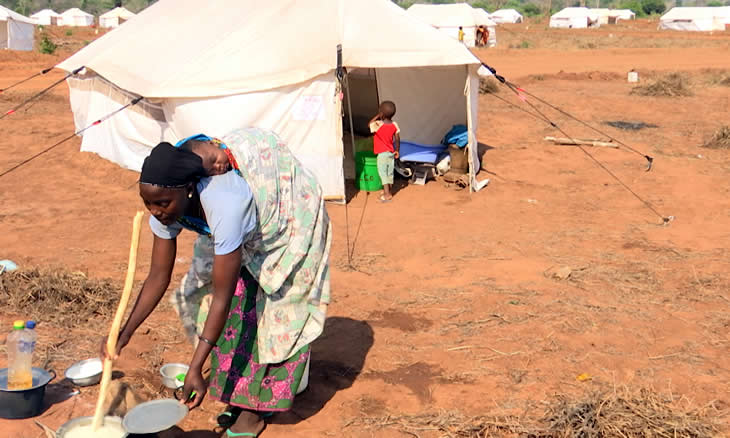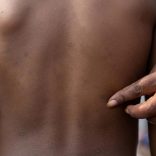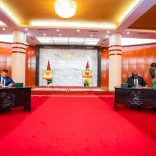Mozambique: Two mpox cases confirmed in Manica province, Maputo city now has six suspected cases
Mozambique: 92 families displaced by terrorism resettled in Corrane, Nampula

Photo: O País
A new life has started for 92 families displaced from Cabo Delgado, now permanently settled in Nampula. The Nampula Secretary of State says the resettlement process is not forced, and that the government and partners are currently engaged in creating better conditions in the resettlement zone.
Cesaquiwa Omar, 18 years old, is carrying her three-month-old son, born in the midst of the conflict that forced her to leave her homeland and seek refuge in Nampula with her husband.
A person of few words, the young mother says that she has left her troubles behind and has hope for a better life in the new land. “I like it here. There was no home back there, but here, I will have a home,” she says. In fact, Cesaquiwa’s temporary home is a tent on a demarcated building plot.
The sun is hot; it is past noon. The resettlement centre in Corane administrative post, Meconta district, sees arrivals, the conviviality and activity of children who once again have a peaceful family and community environment after enduring armed violence at home and a certain deprivation individual freedom in the transitional reception centres in Meconta when they first arrived in Nampula.
Each tent can accommodate a family of five, set up in an area that totals 1,500 hectares on housing plots measuring 30 by 20 metres.
“There is a tent there that is available temporarily for a while and starts the process of building a transitional shelter so that the tents can be released to serve more families in need. In those places, the ordering already refers to each family already having space identified for the construction of their final home. We as the government are preparing support so that they can successfully carry out this construction process. At this stage there are already public toilets, but we are going to make material available for each family to build their own toilet,” Nampula Secretary of State Mety Gondola explains.
There is still a lot under construction. The tents were set up some time ago, and the process of transferring the displaced from four transitional centres in Namialo and Meconta officially started this Wednesday.
New housing space, new life and plans for the future; that is the equation that Renita António makes for herself. “My plan, as I am a peasant, is to make a machamba and cultivate. If I manage to make something, I will send my (five) children to school,” she elaborates.
The distribution of land for machambas is part of the resettlement project.
“Each family will receive a hectare and a half, and we will distribute productive material like hoes, machetes and seed for production, and we will ensure that there is support and make tractors available to help prepare the land,” Gondola says.
As of November 2, there were about 34,700 displaced people spread across 18 districts in Nampula province, but not all will be resettled, as the process is not mandatory. The first batch was of 338 people – 92 families. They have freed up the two schools in Namialo that were serving as transitional reception centres.
By Ricardo Machava












Leave a Reply
Be the First to Comment!
You must be logged in to post a comment.
You must be logged in to post a comment.